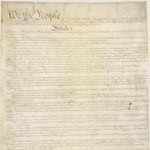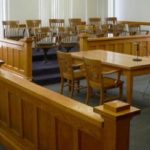In 1998, when Lilly Ledbetter filed her complaint of wage discrimination against the Goodyear Tire and Rubber Co. with the Equal Employment Opportunity Commission, her goal was to get equal pay for equal work because that was the law. She had no idea that her decision would eventually involve all three branches of government and result in a law with her name on it – the Lilly Ledbetter Fair Pay Act of 2009.
Sixth Amendment Activities
Apply landmark Supreme Court cases to contemporary scenarios related to your right to counsel and your right to a fair trial in the Sixth Amendment.
The Rule of Law in Your Life
Rule of law is a principle under which all persons, institutions, and entities are accountable to laws that are: publicly promulgated, equally enforced, independently adjudicated, and consistent with international human rights principles. The Administrative Office of the U.S. Courts has created this resource to help your students understand rule of law with an overview of the topic; opening discussion questions; relevant landmark case summaries; and discussion questions to check for understanding. In a Court Shorts video, nine federal judges explain how fair and consistent adherence to the law protects our rights and well-being in everyday situations.
Court Shorts: An Impartial Federal Judiciary
This short video from the U.S. Courts focuses on the importance of a fair and impartial judiciary. What does this concept mean to you? In this video, students question federal judges on these principles.
Weights and Measures
In this lesson, students will come to understand why having common weights and measures, imposed and enforced by the government, is important in day-to-day life. They will discuss how weights and measures permeate the sciences, industry, and commerce, discovering the importance of such standards in their own lives. In the process, students will identify concepts underlying the need for weights and measures, such as private property and fair treatment under the law.
“American Skin” Song Analysis
Students will explore their ideas about fairness in the American criminal justice system and the role of race and ethnicity by analyzing the depiction of the Amadou Diallo shooting in Bruce Springsteen’s song “American Skin (41 Shots).” They will apply newly acquired knowledge about the protections and limits of the Fourth and 14th Amendment and law enforcement challenges to a reevaluation of their ideas about fair and equal treatment by the police.
The First Amendment: What’s Fair in a Free Country?

Young people have a profound sense of the importance of fairness. “It’s not fair” is often used as a one-size-fits-all argument when a child feels victimized. In situations where the child has an interest in protecting his or her actions, “It’s a free country!” is often the argument of choice. On the other hand, children are very sensitive about speech and policies they consider to have a negative effect on their well-being.
Balancing rights and responsibilities is difficult, even for the Supreme Court. This lesson demonstrates to students that doctrine of freedom of speech and its proper application is an ongoing process.
A Call to Act: Ledbetter v. Goodyear Tire and Rubber Co.
Jury Selection on Trial: Edmonson v. Leesville Concrete Co.

If the constitutional guarantee of a fair trial is to be realized, the process used for selecting jurors must also be fair. Before Edmonson v. Leesville Concrete Co., the constitutional principle of equal protection under the law had been applied to federal jury selection practices in criminal trials but not in civil trials. In this lesson, students learn about jury selection and how the role and responsibilities of government in civil and criminal jury trials are viewed by the Supreme Court.
Jury Service: Our Duty and Privilege as Citizens
In America, the responsibility to protect individual rights and promote the common good ultimately rests with its citizens, not the government. When citizens participate in thoughtful and responsible ways, the welfare of our constitutional democracy is ensured. While most civic participation is voluntary, the call to serve on a jury is not. It comes as an order by the court.
